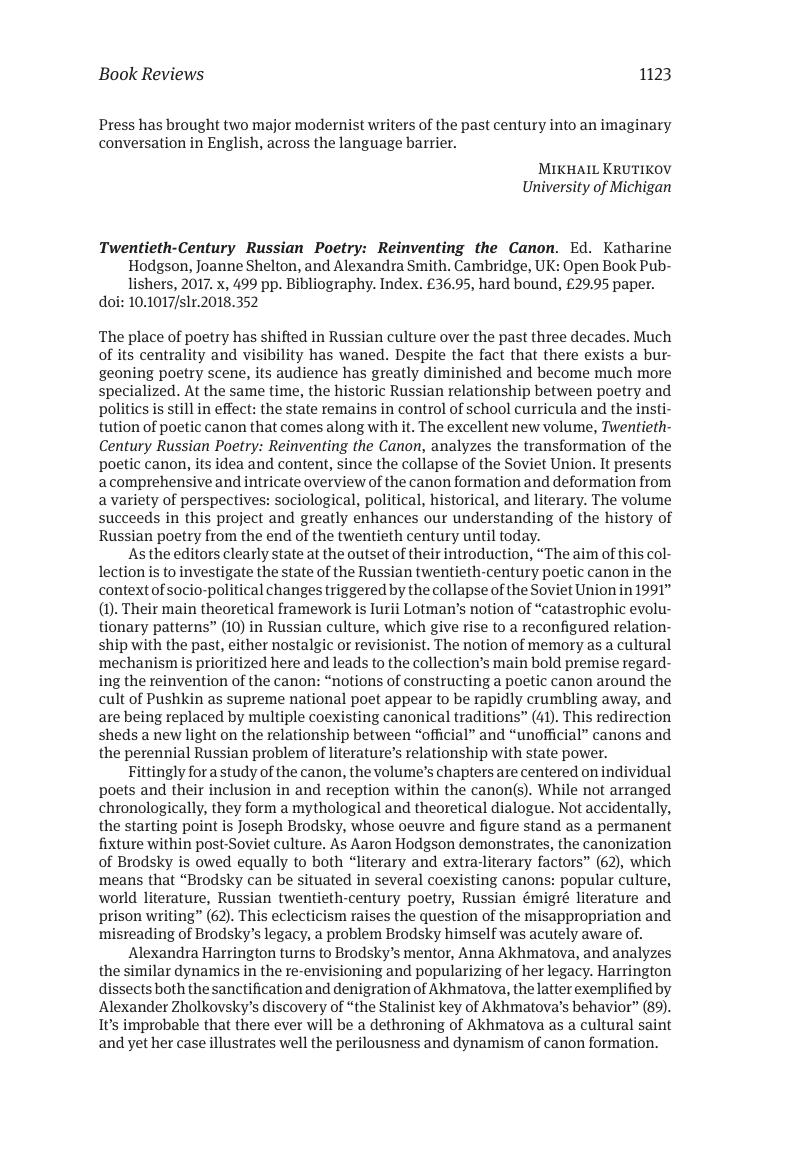No CrossRef data available.
Article contents
Twentieth-Century Russian Poetry: Reinventing the Canon. Ed. Katharine Hodgson, Joanne Shelton, and Alexandra Smith. Cambridge, UK: Open Book Publishers, 2017. x, 499 pp. Bibliography. Index. £36.95, hard bound, £29.95 paper.
Review products
Twentieth-Century Russian Poetry: Reinventing the Canon. Ed. Katharine Hodgson, Joanne Shelton, and Alexandra Smith. Cambridge, UK: Open Book Publishers, 2017. x, 499 pp. Bibliography. Index. £36.95, hard bound, £29.95 paper.
Published online by Cambridge University Press: 12 February 2019
Abstract
An abstract is not available for this content so a preview has been provided. Please use the Get access link above for information on how to access this content.

- Type
- Book Reviews
- Information
- Copyright
- Copyright © Association for Slavic, East European, and Eurasian Studies 2019


